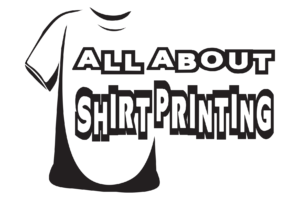Yes, in many cases DTF can replace screen printing. The advantages of screen printing today are mainly in printing in large quantities – when there is a need for large printing quantities and as few colors as possible in the print. In this situation, the big advantage of screen printing will be the cheap costs for the customer, and from the point of view of the printing house – the working time will be significantly shorter.
While screen printing has long been the go-to method of applying custom designs to garments, DTF offers several advantages that make it well worth considering when looking for an alternative. In this blog post, we’ll discuss why DTF printing may be a better fit than traditional screen printing and what factors you should consider before making your decision. Read on to find out how DTF can give your business the edge!
Overview of DTF and Screen Printing
Screen printing is a well-known technique to transfer an image onto a substrate like paper, fabric, or plastic using ink and a mesh stencil. Direct-to-film (DTF) printing is a new technology that allows printers to cut out the traditional screen printing stencils and directly print onto a removable film. This makes the process quicker and easier, with fewer steps and lower costs. The final result is an eye-catching and precise print that is perfect for designs with high detail and vibrant colors. Whether you’re looking to create t-shirts, posters, or any other promotional item, DTF and screen printing offer an excellent and affordable option.
Advantages of DTF printing over screen printing
In the world of printing, technology is constantly evolving and improving. One of the latest advancements is DTF printing, which stands for Direct-to-Film printing. This method offers numerous advantages over traditional screen printing. For starters, DTF printing produces a more vibrant and detailed image, allowing for a greater level of precision. Additionally, it is more efficient and cost-effective, as it requires less preparation time and materials. Another benefit is that DTF printing is more environmentally friendly, as it generates less waste and uses less water. When it comes to printing high-quality designs on a variety of materials, DTF printing is definitely a top contender.
Disadvantages of DTF printing compared to screen printing
While DTF printing has gained popularity in recent years, it is still not without its disadvantages. One of the biggest drawbacks of DTF printing is its limited color range. Unlike screen printing, which allows for nearly limitless color options, DTF printing is limited to a much smaller range. Additionally, DTF printing is not ideal for larger designs or designs with intricate detail. The heat transfer process may cause the design to become distorted, resulting in a less-than-perfect final product. While DTF printing can be a cost-effective and efficient option for smaller-scale projects, it may not be the best choice for larger, more complex designs that require a wider color range and more precision.
Pros and cons of using DTF for various apparel items
DTF, or direct-to-film, has revolutionized the way we print designs onto apparel. With this method, there is no need for transfer paper or weeding vinyl, which saves time and money. Plus, the color intensity and level of detail achievable with DTF far surpasses traditional printing methods. However, there are also some downsides to using DTF. The initial investment in equipment can be costly, and the process itself can be messier and more time-consuming. Additionally, bright colors can fade or bleed over time without proper care. Ultimately, the decision to use DTF or not will depend on your specific needs and priorities for your apparel items.
Cost comparison between DTF and screen printing
When it comes to creating custom designs on clothing, there are many options to choose from. Two popular methods are direct-to-fabric (DTF) printing and screen printing. While both methods produce quality results, there are significant differences when it comes to cost. DTF printing is generally more cost-effective for small orders or designs with multiple colors, while screen printing tends to be more affordable for larger quantities. It’s important to weigh these factors and determine which method is best suited for your specific project to ensure the best possible outcome while staying within your budget.
Tips for working with both types of printing techniques
Working with both types of printing techniques can be a bit of a challenge, but with the right approach, it can be a breeze. One of the most important tips for working with these two techniques is to first understand the differences between them. Offset printing involves transferring ink from a plate to a rubber blanket, then to the paper, while digital printing uses an electrostatic charge, toner, and heat to apply ink to the paper directly. Knowing the strengths and weaknesses of both methods can help you make informed decisions when it comes to choosing the right approach for a specific project. Another tip is to ensure that the artwork and design files are optimized for the printing method being used. This means ensuring that the color profiles, resolution, and file types are all suitable for the type of printing you’re using. With these tips in mind, you’ll be well on your way to producing impressive print materials that effectively convey your message.
To sum it up, DTF printing is a fast and popular method for many apparel items. It offers quick turnaround times and can produce large orders in a shorter period of time than screen printing. However, DTF has limited color selection compared to traditional screen printing, and its cost may be prohibitive if large quantity orders are needed. Ultimately, the decision about which type of printing to use for your apparel projects will depend on several factors including your budget, timeframe, and desired design elements. Thankfully, both screen printing and DTF can be used together to create different looks, so don’t be afraid to experiment with both methods!

